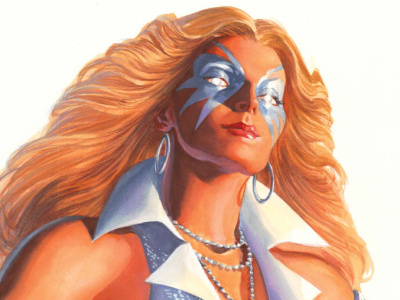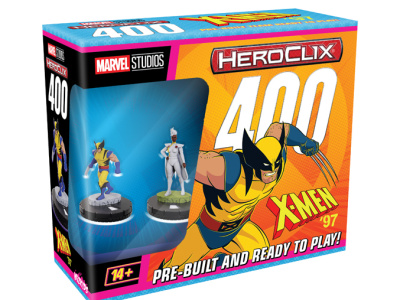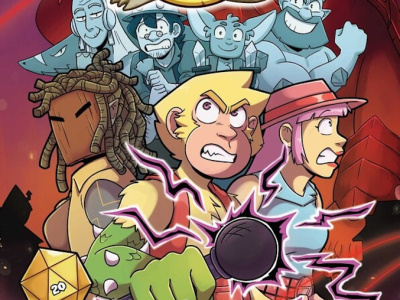Whether you’re involved in comics and graphic novels as a historically periodical-focused comic shop or a traditional book store, there are significant lessons to be learned from looking at this field from the other side of the divide. And publishers as well as talent would do well to consider looking at the puzzle from as many perspectives as possible.
First of all, the long and wonderful pattern of how comic shops sell periodicals doesn’t work to maximize their graphic novel sections, which are now potentially over half their sales. Comic shops were built to cater to the very knowledgeable customer—that weekly buyer who came in with a list and a passion to steer him (it was pretty much all one gender back in those days). The graphic novel section could be all spine-out, organized by creator or imprint, with maybe a break-out section for the brand name talent that might attract a new reader, like Alan or Neil. With that super-knowledgeable customer and a modest selection of available titles, that worked fine.
It doesn’t anymore.
With thousands of graphic novels in print, and genres/styles ranging across a diverse horizon, thirty or forty feet running feet of spines isn’t much better than the shopping experience on Amazon if you don’t know what you’re looking for when you arrive. A more complex display is needed. Different stores will need different solutions, but looking to the ways indie bookstores have handled the challenge of the massively unbranded world of prose gives us some options to choose from. It’s time to think of more break-out sections: TV/film titles, memoir, this year’s award winners, new releases…even classics (seriously, it shouldn’t be hard to find Maus or Persepolis in a comic shop). Even “Your first graphic novel” as a shelf or two?
We’ve long known that certain titles were gateway drugs to get new readers hooked. Back in the day, Watchmen and Sandman may have been the magic ones, and they’re still great. But as I query my college students, Fun Home and The Walking Dead show up as often. Can we get them out of the numbing alpha-shelves, please? And any shop that isn’t prominently displaying Raina’s work next to books they feel can cross-sell is simply missing the best bet for a new audience we’ve had since…well, the 1980s.
There are other classic indie tricks: the little index cards with hand-written staff picks above the full facing titles. Nobody has a smarter, more passionate sales staff than a comic shop. How about adapting this, and making it possible for them to handsell to the shy or when they’re too busy to talk? And a sale table with regularly refreshed titles that aren’t overstock will more than pay for itself.
Going in the other direction, bookstores can learn a thing or two from comic shops too.
In many bookstores, there’s one staff person who’s the comics fan; probably the person who got them to devote real space to graphic novels. They can’t do the job that a totally comics-focused staff can do, but how about empowering them and helping that person connect with the curious customer? Maybe a big button, “Ask me about graphic novels?” (Lettered in a word balloon, of course.) Or specifically giving them space for their staff pick each week. Comic shops thrived by cultivating people who enjoyed shopping there every Wednesday; maybe a graphic novel of the week selection to attract attention? (And a discount price on that selection wouldn’t hurt, either.)
Comics—and graphic novels are simply bigger packages of comics—have long sold best when displayed face out because they are a visual medium. While a brilliant book cover has often helped sell prose, it’s fundamentally disconnected to the contents in a way that the cover of a graphic novel isn’t. With the rarest exception, no volume of prose features a cover by the author. The cover of a graphic novel, on the other hand, can be a direct promise of the pleasures within.
There are some stores on either side of our great divide doing all of these things and more, and some publishers working hard to encourage them. But we’re at an explosive moment, with a generation coming of age that loves visual communication, has been introduced to our characters and stories through film, television and those lovely, massive marketing budgets, and yet seems to continue to love printed, physical books. Especially when those books are beautifully produced and designed, as so many graphic novels are.
Take a trip down your aisles, your competitors, and even make a field trip to see what the best practices seem to be. We’ve all got things to learn from the other side.
--Paul Levitz has been active as a comic fan (The Comic Reader), editor (Batman), writer (Legion of Super-Heroes), executive (30 years at DC Comics, ending as President & Publisher), historian (75 Years of DC Comics: The Art of Modern Myth-Making), and educator.
--The opinions expressed in this column are solely those of the writer, and do not necessarily reflect the views of the editorial staff of ICv2.com.









